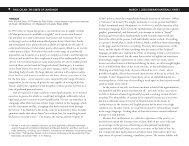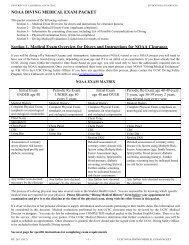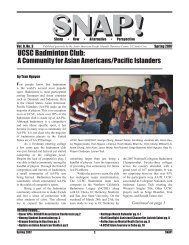Phase II - For www2
Phase II - For www2
Phase II - For www2
You also want an ePaper? Increase the reach of your titles
YUMPU automatically turns print PDFs into web optimized ePapers that Google loves.
influences beyond the customer relationship, plus recognize people in the IT community as essential<br />
resources.<br />
Client Relationship Management<br />
There are multiple ways that a client may initially contact the IT organization to request service or<br />
assistance. Regardless of how that first contact is made, the responsibility for meeting the needs of<br />
clients now rests squarely on the organization, not the client. The proposed client relationship<br />
management organization has distinct elements including self-service, Help Desk, Divisional<br />
Liaisons, and Local IT Specialists to maximize the value of these client interactions.<br />
IT Services, Governance and Portfolio Management<br />
Defined services imply a well thought out service catalog designed around what people need to get<br />
their work done. This is a shift from a technology-focus to a client focus. The IT service catalog<br />
defines what is and what is not included in “bronze” or “bronze-plus” services.<br />
Service management will review and manage services for maximum value to the clients – portfolio<br />
management connects and maintains the alignment of the IT service catalog with campus priorities<br />
and resource management. ITTP has defined three dimensions of governance – strategic,<br />
operational, technical – to guide the IT organization and service delivery.<br />
Funding and Costing<br />
One goal of the IT service delivery model is transparency regarding the pricing of IT services. This<br />
transparency is combined with funding strategies that fill the total envelope of IT dollars and<br />
provides the basis for trade-offs and cost-benefit analyses that align the two. During <strong>Phase</strong> <strong>II</strong>, the<br />
Funding Team worked with the Workstation Support, Client Relationship Management, Web<br />
Publishing, and Server Resource Management Team to cost out IT services. Their process and tools<br />
are models for continued work in costing.<br />
IT anticipates one-time expenses to consolidate the IT organization transform services and get to<br />
possible efficiencies. Through consolidation, IT must strive for efficiencies that can be offered back<br />
to the campus. A scalable funding model for IT is needed for services to grow in size or complexity.<br />
A challenge for funding IT remains with the unfunded gap in infrastructure services that IT continues<br />
to carry both centrally and in the divisions. This gap, along with campus initiative relying on IT<br />
require additional incremental investments<br />
IT Organizational Structure<br />
One of the outcomes of the ITTP process was the development of a first tier organization structure<br />
with six director positions. Two of these, director client relationship management and director IT<br />
services offer significant support for client interactions and a specific focus on service definition and<br />
management. The director IT strategy and planning is a dedicated resource to the alignment with<br />
campus and divisional strategies and assessment. The director program management provides<br />
explicit support for program and project management. The final two, director application solutions<br />
and director core technologies oversee the processes, tools and technologies that are critical for<br />
delivering services.<br />
Implementation<br />
The work of the ITTP teams is rich in detail that will provide the foundation for <strong>Phase</strong> <strong>II</strong>I<br />
Implementation. Many of the teams looked in detail at processes, governance, standards, policies,<br />
organizational implications, tools and technologies. The work from <strong>Phase</strong> <strong>II</strong> informs how IT can<br />
approach organizational change, with a guiding document “Who We Are”.<br />
---------------------------------------------------------------------------------------------------------- <strong>II</strong>I





